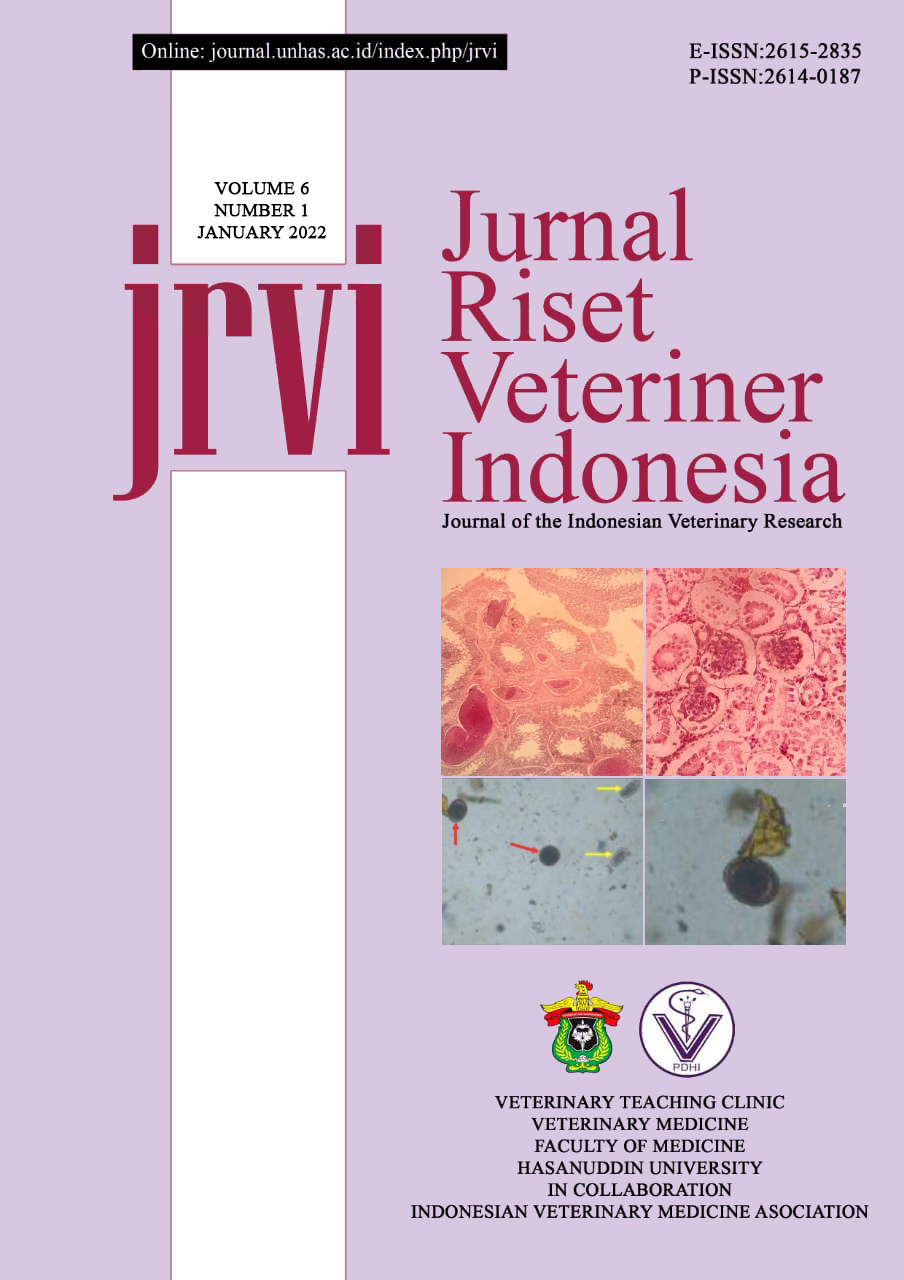Abstract
This study aims to determine the factors that affect the success rate of artificial insemination (AI) in Woha district, Bima Regency. This study method was the survey method, using primary and secondary data. Primary data was obtained by distributing questionnaires and interviews directly to farmers as additional information, while secondary data was obtained from inseminators related to the results of artificial insemination in the Woha district. The questionnaire used included questions about cattle characteristics, namely: pregnancy status, type of cattle, age of cattle, body condition score at artificial insemination, number of artificial insemination to pregnant, estrus signs, time implementation of artificial insemination, interval duration of postpartum to estrus, type of straw, insemination doses, reporting interval since lust up to artificial insemination treatment, cattle feed, stocked cattle, and farmer identity with 47 farmer respondents from 3 villages. Data were analyzed using stepwise regression with the help of SPSS. The results showed that of the 90 female cattle carried out by artificial insemination, 85.6% had a pregnancy, and 14.4% had no pregnancy. The independent variable which had the strongest correlation was the age of cows (sig. 0.006), the reporting interval since estrus to artificial insemination treatment (sig. 0.001), and cattle feed (sig. 0.004). The three factors that have the strongest correlation were based on sig. <0.05 so that it had a significant effect on the success of artificial insemination in the Woha district, Bima Regency
Keywords: Artificial insemination (AI), beef cattle, succes factor, Woha district

This work is licensed under a Creative Commons Attribution-NonCommercial 4.0 International License.

